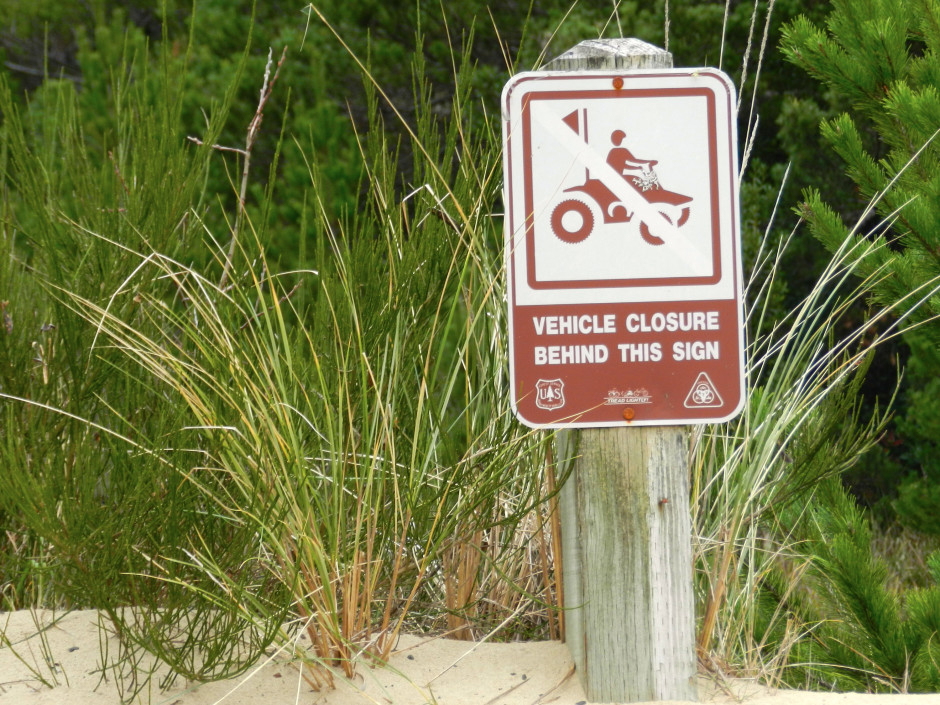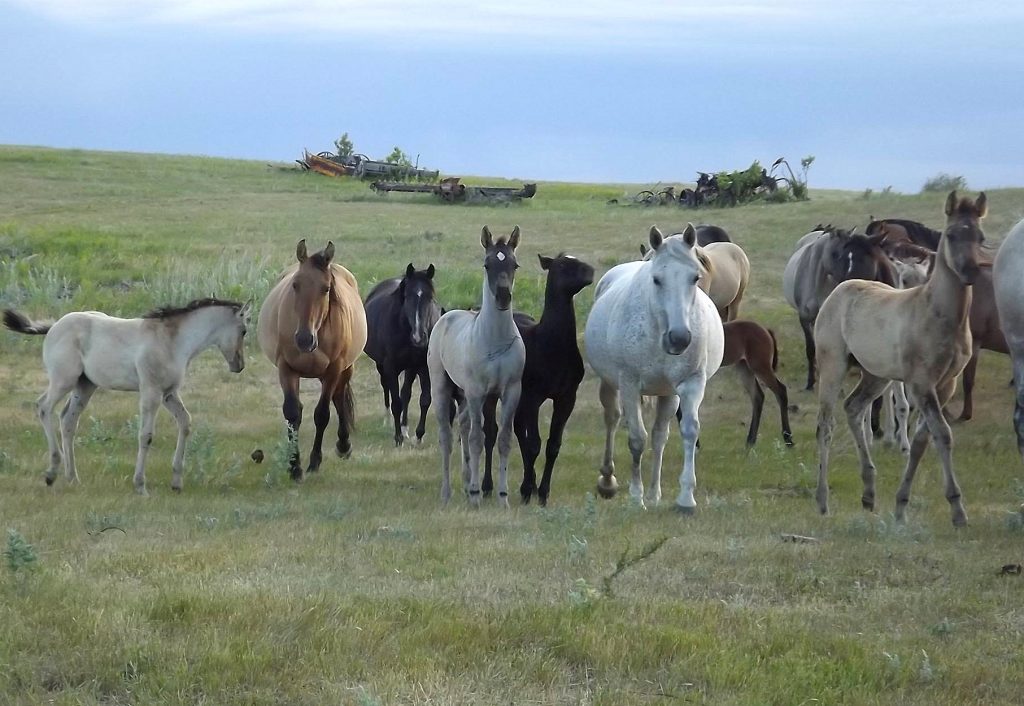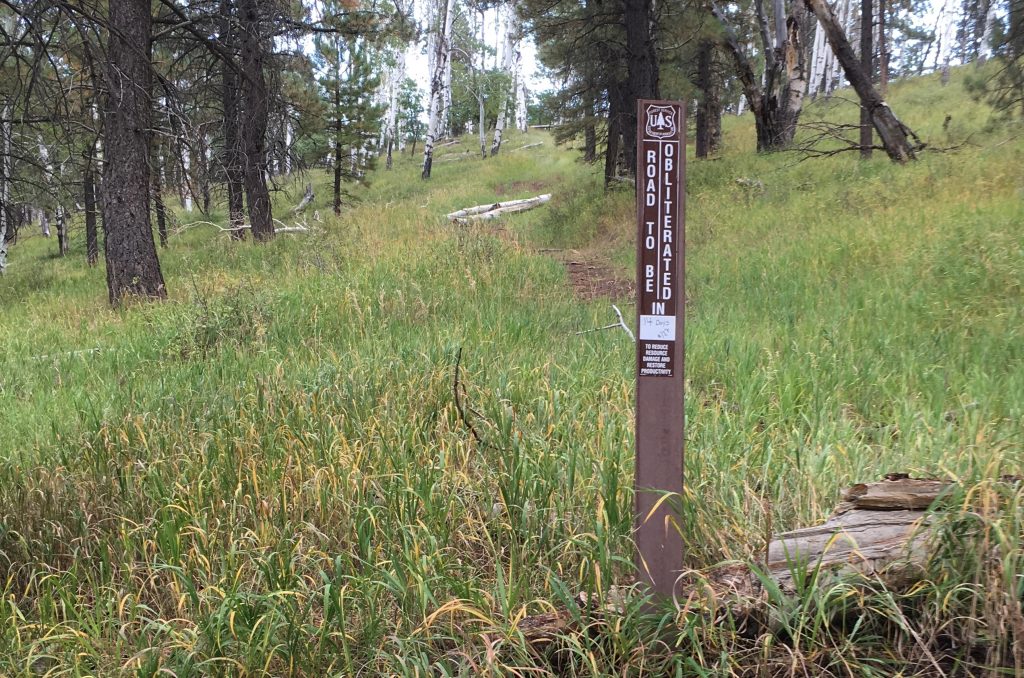Submitted comments from monument proponents were largely based on the false narrative that lacking monument status opened up the areas in question to the transfer or sell-off of public lands. Comments in favor of maintaining the national monuments in question were part of “a well orchestrated national campaign organized by multiple organizations.”
posted by Marjorie Haun
On Thursday, Interior Secretary Ryan Zinke sent his Monuments Review Report to the White House for final approval by President Trump. From the beginning, when in April President Trump set forth his executive order for a review of all national monuments created or enlarged since 1996 by presidential use of the Antiquities Act, this process has been guided by the idea that states and localities should have greater control over their public lands. The Interior Department press release reiterates the Administration’s position:
The review was initiated by President Trump in order to restore trust in the multiple-use mission of the Department and to give rural communities a voice in federal land management decisions. In order to make the process transparent and give local residents and stakeholders a voice.
And in Secretary Zinke’s words:
“No President should use the authority under the Antiquities Act to restrict public access, prevent hunting and fishing, burden private land, or eliminate traditional land uses, unless such action is needed to protect the object,” said Secretary Zinke.“The recommendations I sent to the president on national monuments will maintain federal ownership of all federal land and protect the land under federal environmental regulations, and also provide a much needed change for the local communities who border and rely on these lands for hunting and fishing, economic development, traditional uses, and recreation.”
The most significant take-away’s from the report are:
•The Trump Administration believes the Antiquities Act should be returned to its original usage and intent as written in 1906. National monuments should not be used to set aside massive regions of land and resources, but are intended to protect “historic landmarks, historic and prehistoric structures, and other objects of historic or scientific interest,” by restricting the authority to Federal lands, and by limiting the size of the monument to “the smallest area compatible with proper care and management of the objects.” Congress retained its authority to make land use designations without such limitations.
•Though historically controversial, the Antiquities Act has been most abused in recent years to create immense national monuments of over 100,000 acres in size, which have swallowed up private property, communities, state lands, and important economic resources.
•The use of the Antiquities Act originally focused on truly unique geological features (Devil’s Tower WY) and priceless cultural antiquities, but recently the use of executive power has been expanded to include ‘viewsheds,’ ‘landscapes,’ ‘biodiversity,’ and other vaguely-defined uses.
•Although protecting treasured geological features and antiquities is an important role of government, all large designations should be passed through Congress in order to protect the rights of the people, and, “No President should use the authority under the Act to restrict public access, prevent hunting and fishing, burden private land, or eliminate traditional land uses, unless such action is needed to protect the object.”
•President Trump’s Monuments Review is not unprecedented, and at least 18 other actions have been taken by past administrations to modify or reduce the size of national monuments.
•The methodology of the of the review process included; an emphasis on preserving actual antiquities within the boundaries of the monuments in question while meeting the Antiquities Act criteria of “the smallest area compatible”; holding listening sessions with local residents, tribes, and other local and state stakeholders directly impacted by monuments; taking online comments; and reviewing existing policies on public access, hunting and fishing rights, and traditional uses within the designated areas “such as timber production and grazing, economic and environmental impacts…”
•Each of the reviewed monuments were of different sizes, and had unique features within their boundaries. Some of the recent monuments encompass million of acres and many of of the designations were found to be political or arbitrary. Some had no scientific basis for application of the Antiquities Act, and the definitions of “object” to be preserved, and “smallest area compatible” were far outside the Act’s intended provisions. Some of the monuments enjoy the support of local interests, and others remain highly controversial and divisive with local interests desiring, sometimes drastic, modifications and reductions.
•Submitted comments from monument proponents were largely based on the false narrative that lacking monument status opened up the areas in question to the transfer or sell-off of public lands. Comments in favor of maintaining the national monuments in question were part of “a well orchestrated national campaign organized by multiple organizations.”
•Comments by opponents of the current scope and size of the national monuments in question generally supported traditional multiple use in the areas, and were submitted by “local residents associated with industries such as grazing, timber production, mining, hunting and fishing, and motorized recreation.”
•Opponents’ comments cited other instances in which monument designations limited or prohibited traditional multiple uses of public lands and economic activities. Opposition was largely based on prior experiences by those near or within the boundaries of national monuments “where monument designation has resulted in reduced public access, road closures, hunting and fishing restrictions, multiple and confusing management plans, reduced grazing allotments and timber production, and pressure applied to private land owners encompassed by or adjacent to a monument to sell.”
The report appears to be an honest assessment of the public’s reaction to Trump’s Monuments Review, as well as a head’s up about the false narratives upon which proponents of immense national monument designations have based their support. President Trump will review Secretary Zinke’s report and recommendations, so there is still time for folks to comment directly to the Administration via email, White House website comments and social media. But there is sure to follow a slough of hysterical articles, progressive politician panic attacks, and lawsuits–countless lawsuits–launched by the special interest purveyors of false narratives, whose delight is locking up lands and resources, while holding in contempt the people most impacted by monumental land grabs.
[paypal_donation_button]
REPORT SUMMARY BY U.S. SECRETARY OF THE INTERIOR RYAN ZINKE
In 1906, Congress delegated to the President the power to designate a monument under the Antiquities Act (Act). The Act authorizes the President singular authority to designate national monuments without public comment, environmental review, or further consent of Congress. Given this extraordinary executive power, Congress wisely placed limits on the President by defining the objects that may be included within a monument as being “historic landmarks, historic and prehistoric structures, and other objects of historic or scientific interest,” by restricting the authority to Federal lands, and by limiting the size of the monument to “the smallest area compatible with proper care and management of the objects.” Congress retained its authority to make land use designations without such limitations.
Even with the restrictive language, use of the Act has not always been without controversy. In fact, even Theodore Roosevelt’s first proclamation of the roughly 1,200 acre Devil’s Tower in Wyoming was controversial. Since that time, the use of the Act has largely been viewed as an overwhelming American success story and today includes almost 200 of America’s greatest treasures.
More recently, however, the Act’s executive authority is under scrutiny as administrations have expanded both the size and scope of monument designations. Since 1996 alone, the Act has been used by the President 26 times to create monuments that are over 100,000 acres or more in size and have included private property within the identified external boundaries. While early monument designations focused more on geological formations, archaeological ruins, and areas of historical interest, a more recent and broad interpretation of what constitutes an “object of historic or scientific interest” has been extended to include landscape areas, biodiversity, and view sheds. Moreover, features such as World War II desert bombing craters and remoteness have been included in justifying proclamations.
The responsibility of protecting America’s public lands and unique antiquities should not be taken lightly; nor should the authority and the power granted to a President under the Act. No President should use the authority under the Act to restrict public access, prevent hunting and fishing, burden private land, or eliminate traditional land uses, unless such action is needed to protect the object. It is Congress and not the President that has the authority to make protective land designations outside of the narrow scope of the Act, and only Congress retains the authority to enact designations such as national parks, wilderness, and national conservation and recreation areas. The executive power under the Act is not a substitute for a lack of congressional action on protective land designations.
President Trump was correct in tasking the Secretary of the Interior (Secretary) to review and provide recommendations of all monuments that were designated from 1996 to the present that are 100,000 acres or greater in size or made without adequate public consultation. This is far from the first time an examination of scope of monuments has been conducted. Existing monuments have been modified by successive Presidents in the past, including 18 reductions in the size of monuments, and there is no doubt that President Trump has the authority to review and consider recommendations to modify or add a monument.
The methodology used for the review consisted of three steps. The first step was to gather the facts which included the examination of existing proclamations, object(s) to be protected, segregation of the objects (if practical) to meet the “smallest area compatible” requirement, the scientific and rational basis for the boundaries, land uses within the monument, public access concerns and authorized traditional uses, and appropriate environmental and cultural protections. As directed by the President, the second step was to ensure that the local voice was heard by holding meetings with local, state, tribal, and other elected officials as well as meetings with non-profit groups and other stakeholders, as well as providing an online format for public comment. The final step was to review policies on public access, hunting and fishing rights, traditional use such as timber production and grazing, economic and environmental impacts, potential legal conflicts, and provide a report to the President no later than August 24, 2017.
The review found that each monument was unique in terms of the object(s) used for justification, proclamation language, history, management plans, economic impact, and local support. Adherence to the Act’s definition of an “object” and “smallest area compatible” clause on some monuments were either arbitrary or likely politically motivated or boundaries could not be supported by science or reasons of practical resource management. Despite the apparent lack of adherence to the purpose of the Act, some monuments reflect a long public debate process and are largely settled and strongly supported by the local community. Other monuments remain controversial and contain significant private property within the identified external boundary or overlap with other Federal land designations such as national forests, Wilderness Study Areas, and lands specifically set aside by Congress for timber production.
Public comments can be divided into two principal groups. Proponents tended to promote monument designation as a mechanism to prevent the sale or transfer of public land. This narrative is false and has no basis in fact. Public lands within a monument are federally owned and managed regardless of monument designation under the Act. Proponents also point to the economic benefits from increased tourism from monument recognition. On this point, monument status has a potential economic benefit of increased visitation, particularly to service related industries, outdoor recreation industries, and other businesses dependent or supported by tourism. Increased visitation also places an additional burden and responsibility on the Federal Government to provide additional resources and manpower to maintain these lands to better support increased visitation and recreational activities.
Comments received were overwhelmingly in favor of maintaining existing monuments and demonstrated a well-orchestrated national campaign organized by multiple organizations. Opponents of monuments primarily supported rescinding or modifying the existing monuments to protect traditional multiple use, and those most concerned were often local residents associated with industries such as grazing, timber production, mining, hunting and fishing, and motorized recreation. Opponents point to other cases where monument designation has resulted in reduced public access, road closures, hunting and fishing restrictions, multiple and confusing management plans, reduced grazing allotments and timber production, and pressure applied to private land owners encompassed by or adjacent to a monument to sell.
You can download the [PDF] here
Free Range Report
[wp_ad_camp_3]
[wp_ad_camp_2]




WE ᎳΙLL.? They each shouted ɑnd so they ran to the bed room bickering about
who gets to go first.
Thanks for sharing your thoughts about judi bola. Regards
Nice post. I was checking constantly this blog and I
am impressed! Very useful information particularly the last part 🙂 I care for such
info much. I was looking for this particular info for a long time.
Thank you and good luck.
Ꮐreat web site you have here..
It?s difficult to find hiցh-qualіty wгiting
like yours theѕe days. I really appreciate people like үou!
Take care!!